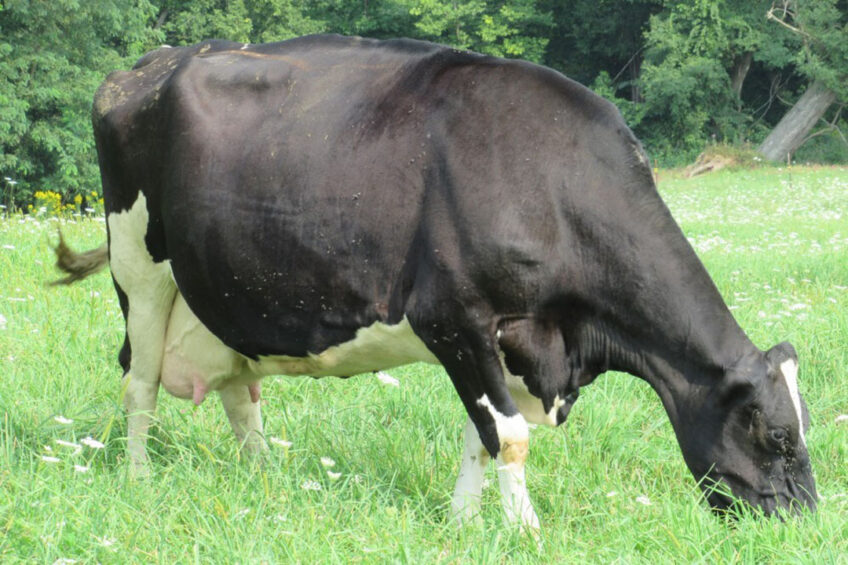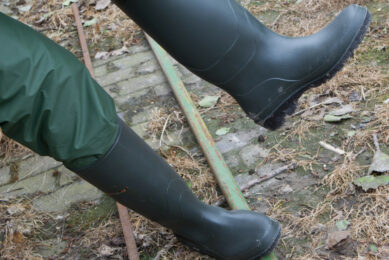Why some dairy cows naturally fend off the horn fly

A recent study found that some Holstein dairy cattle naturally fend off the horn fly. These findings could help organic milk producers whose dairy cows are pasture-raised and are not exposed to synthetic pesticides or antibiotics.
Penn State’s College of Agricultural Sciences discovered that some Holstein dairy cattle, particularly those with white coat coloration, naturally fend off the horn fly, a parasitic insect that can cause stress and disease in grazing cattle.
Hundreds of millions in lost profit
Leading the research was Bailey Basiel, a graduate student in the Department of Animal Science who conducted the investigation under the guidance of Chad Dechow, associate professor of dairy cattle genetics. She noted that horn fly infestation results in more than US$700 million in lost profit in the US each year, with another US$60 million spent by producers on fly control.
Animal welfare concerns
Aside from the economic impact, the more significant concern is the horn fly’s impact on animal welfare, said Basiel. “Horn fly bites are painful and irritating to cattle,” she said. “Severe infestations can lead to bacterial infection, stress, decreased milk production, weight loss and poor health.”
To address the problem, the researchers wanted to learn if resistance to horn flies is a heritable trait in Holstein cattle, and if so, what genes are responsible for making those cattle less attractive to the insect.
Counting flies and cow colour composition
The height of horn fly season is between May and September and so, together with 13 organic dairy producers across the US, Basiel and her team documented fly loads on more than 1,600 pastured Holstein between during these months from 2017 to 2019.
Trained scorers assessed fly load on a scale of 0 (few to no flies) to 4 (high infestation), which was validated by counting flies from digital images. Cattle colour composition was also documented with percentages of black and white noted. Factors such as stage of lactation, physical environment and health status were considered. Genetic testing on a random subset of the animals was also performed and the results were submitted to the Council on Dairy Cattle Breeding.
Collating coat colour and genetics
Basiel and her team discovered that cattle with predominately white coats had lower fly loads than those that were predominately black. When collated with information from the genetic findings, the scientists discovered that a region on chromosome 6 was associated with the most variation in horn fly load. The gene KIT, which is involved in coat pattern and coloration, is located within that region and likely is associated with variation in fly load, Basiel explained.
Fly loads and milk yields
Basiel notes that the team observed that cows with higher fly scores had reduced milk production around the time of scoring. However, milk and component production were genetically correlated with fly load, so, cows that were genetically predisposed to making the most milk also were more susceptible to horn fly infestation.
According to Basiel and Dechow, the findings are preliminary and more research is needed to understand the potential advantages and disadvantages of breeding for horn fly resistance.
“Until we determine if there are other genes or traits that influence fly load in cattle, I wouldn’t recommend breeding for white cattle only,” Basiel said. “Future studies will determine if genetic selection may be another tool to help. Until then, organic producers should continue to use good manure management, fly traps and natural repellants to protect their herds.”
He noted that making pasture-based dairy systems more economically competitive while improving animal health and welfare is a good thing for everyone, emphasising that increasing efficiency by even a small amount will mean that organic products, such as milk, can become more affordable.
Join 13,000+ subscribers
Subscribe to our newsletter to stay updated about all the need-to-know content in the dairy sector, two times a week.










